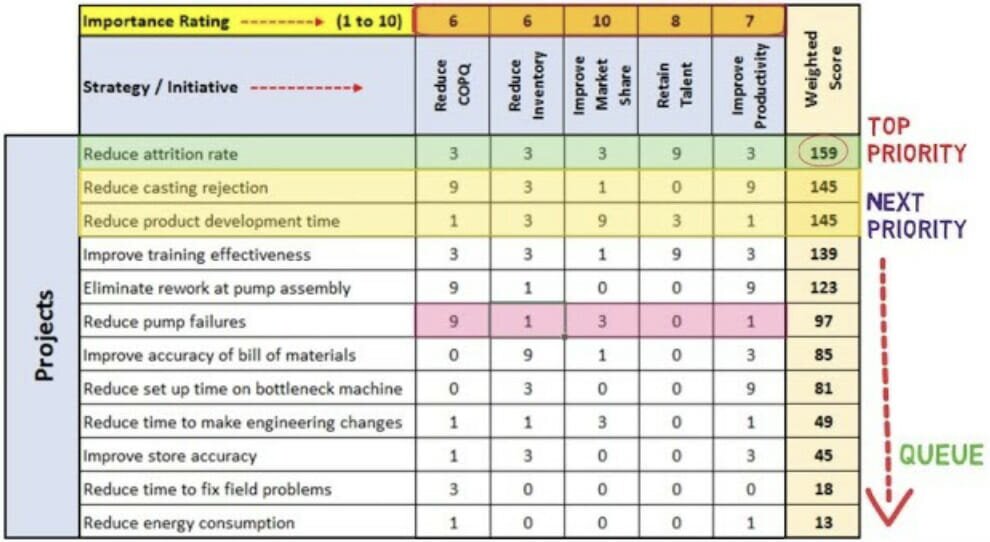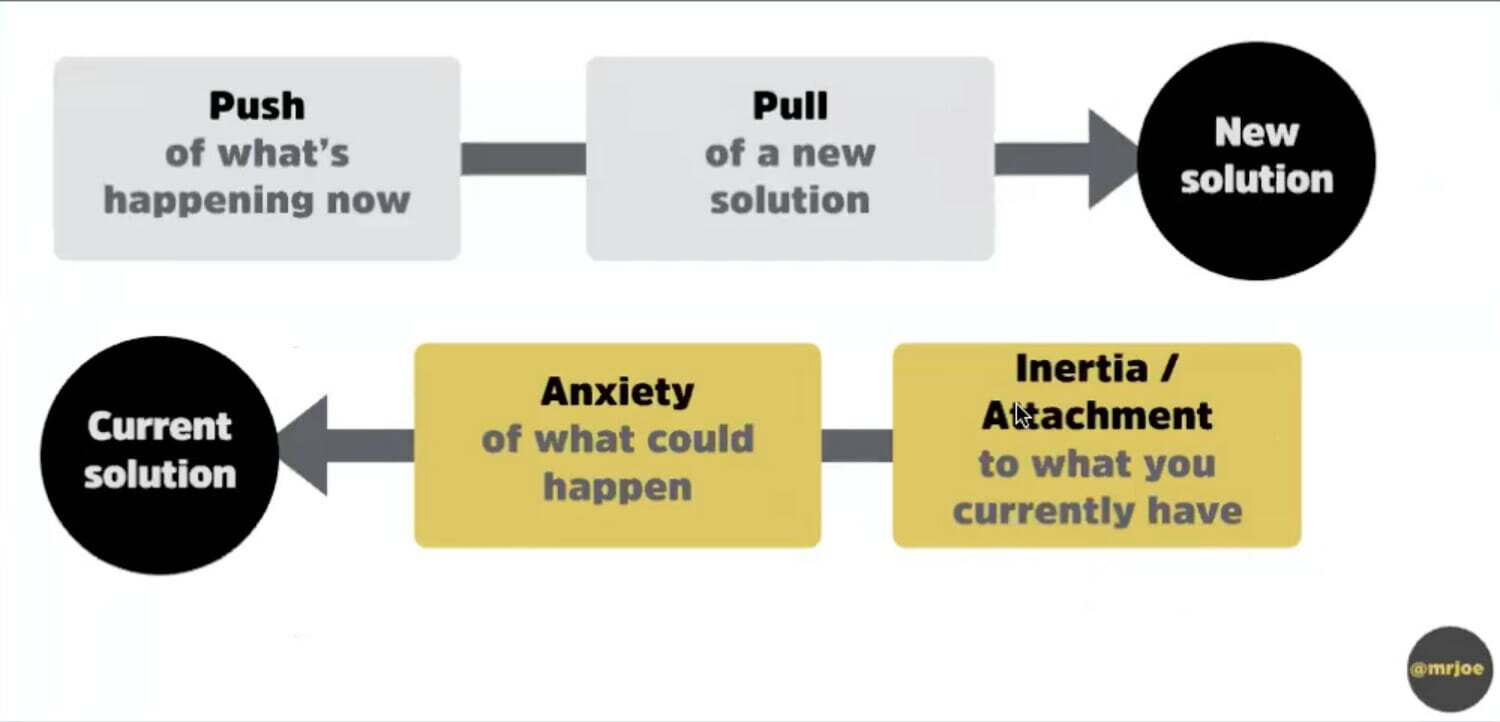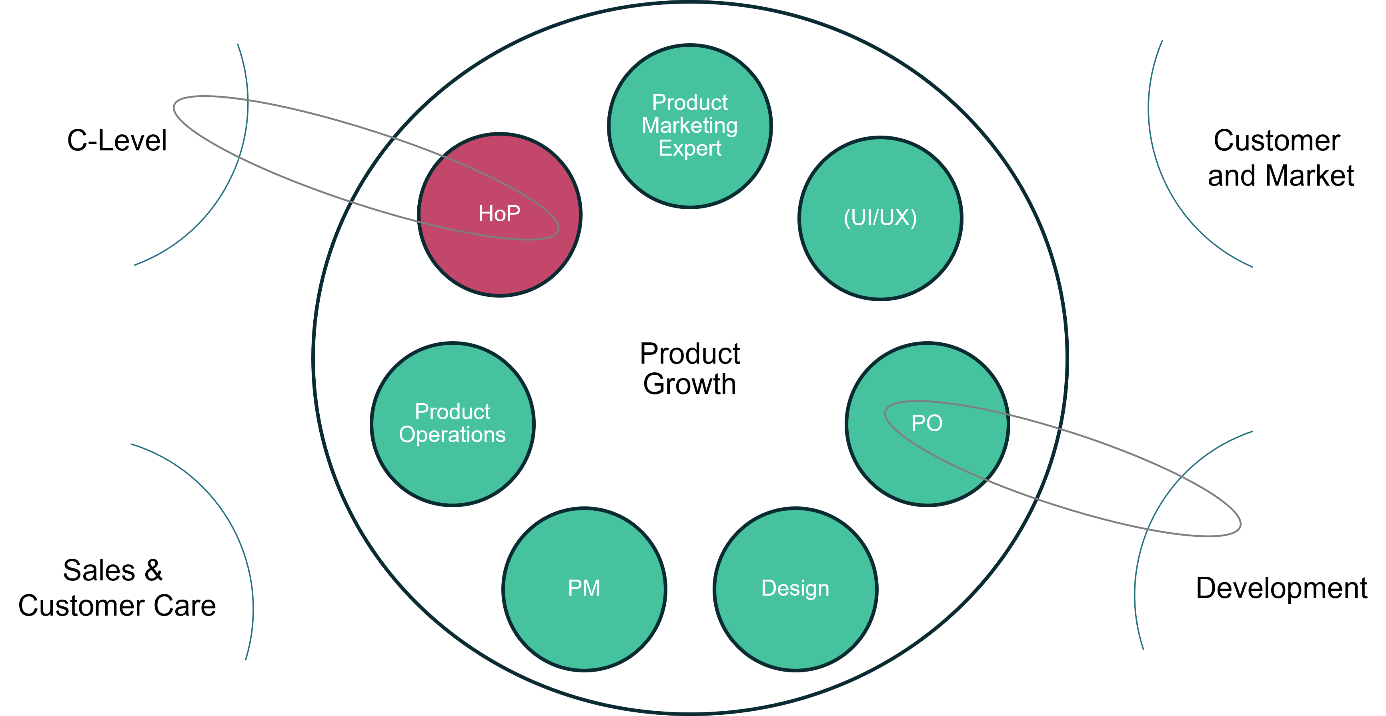According to Gartner’s survey about the state of product management worldwide in 2022, the #1 challenge of product leaders is again planning and prioritising initiatives. It is a daily challenge to make sure the focus is on the right thing at the right moment.
In some cases, the root cause is in the product team organisation itself. Yet sometimes, simple tools, like prioritisation frameworks, can already significantly help to establish the marching order. There are many prioritisation frameworks out there. All have pretty much the same objective: help organisations surface what initiatives are the most worthwhile to pursue and how to rank them in a sequence that brings the best return for the business.
With this article, I’ll dig deep into one specific framework that I fancy a lot for its genericity and its simplicity to apply. In the end, you will master the key principles and be able to come up with clear priorities based on their estimated business impact.
For most businesses, it’s crucial to maximise their investments. On one hand, there are companies spending excessive time trying to calculate the return of a project upfront. On the other hand, some companies are just following the most recent market trends and have no other prioritisation input than the wind whispering in the CEO's ears.
To maximise an initiative’s impact, product managers must concentrate their attention on numerous critical and valuable areas of the business, such as financial issues, legal concerns, operations, and people management. There are many factors to take into consideration, and various indirect benefits could easily be missed.
To measure their business’ success, it is key for companies to identify the metrics that express those aspects and turn their vision into objectives and actionable insights. Yet, many of them tend to keep adding new metrics rather than challenging the relevance or simplifying the existing ones. This continuous increase in metrics and KPIs are making it difficult to see how things will be impacted.
Product managers’ role is to have an insight on how to prioritise development resources. We want to be more fact-driven, less influenced by changes and have quantifiers aligned with the priorities of other stakeholders.
How can we balance the information overload and the number of metrics while maintaining good coverage of the key business dimensions to help us define the marching order?
The Balanced Scorecard (BSC) can be an interesting framework. Steered by Kaplan and Norton in the early nineties, the BSC translates an organisation’s mission and strategy into a comprehensive set of performance measurements, goals, and objectives. The context and conditions of how people in a company are operating are constantly changing. This framework is allowing the team to take autonomous actions in order to meet the company’s goals. It helps to evaluate the value of an effort on various well-balanced dimensions. It covers financials, and non-financial aspects and can easily be standardised across different teams. This will consolidate those different aspects into a single and comparable score.
Source: Prioritisation Matrix example (Lean Six Sigma 2018)
While this does not guarantee the greatest financial results, its simplicity to set up and evaluating the strategic fit makes it a winning strategy. Studies have shown that using a well-balanced scorecard contributes to resulting in competitive advantages (Gaining competitive advantage through the Balanced Scorecard, Gomes and Romão, 2014).
How to calculate the priority score
First, let’s start with a bit of theory and review what the formula looks like:
- You define different prioritisation drivers that are valuable to your organisation:
- You give those prioritisation drivers a weight (e.g. from 1 to 10) based on your strategy and business needs (e.g. focus on short-term money, focus on customer retention, etc.):
- You establish the list of items you want to compare
- For each item, you multiply the impact with each weighted driver
- For each item, you sum up all of it to get the priority score
- You can divide the priority score by the effort of each item to rationalise with the execution dimension
- The end-result will be a list of topics prioritised by priority score
Nevertheless, as you may have already figured out, the choice of the prioritisation drivers remains an arbitrary decision.
So, how to make this strategically meaningful?
How to identify relevant prioritisation drivers
The company’s mission, vision, and strategy can be articulated around four high-level strategic perspectives for the organisation:
- Customer – How do customers see the company?
- Learning & growth – How can the company continue to improve and create value
- Internal process – What must the company excel at?
- Financial – How does the company look to shareholders?
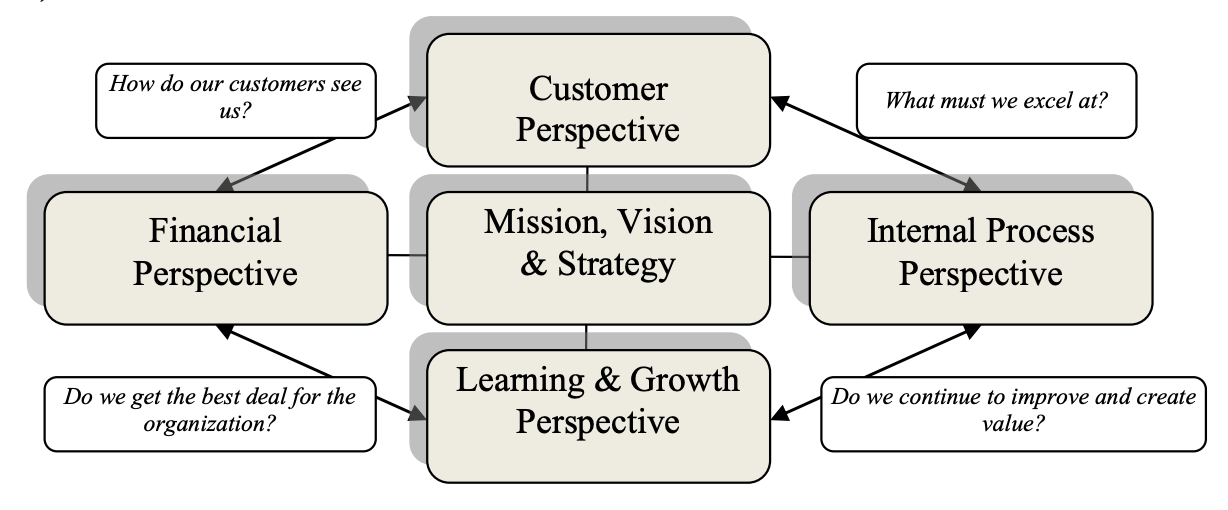
Those four dimensions are based on the following hypothesis of the cause/effect relationship identified by Kaplan & Norton.

With this understanding of how the four dimensions are interconnected, you can identify what factors can influence each dimension, understand their relationship, apply these to your product and company strategy, and how it contributes to the overall business goals.
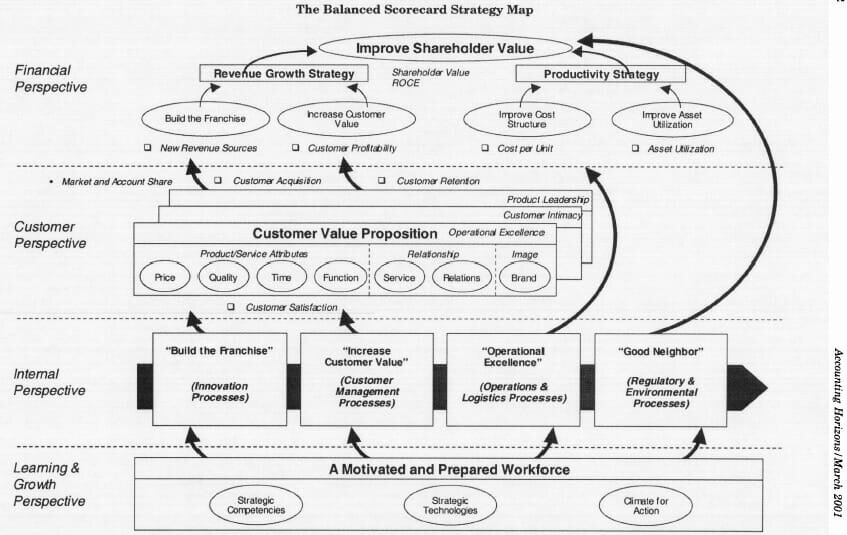
Still a bit abstract? This may sound a little difficult to digest. Don’t worry, we’re going to make this easier to understand. Let’s bottom-up!
How to measure the four strategic perspectives
Learnings and Growth
Ongoing innovation allows you to keep adding value to your business. You explore new fields and turn your discoveries into new opportunities and profits. Innovative thinking can help drive the market and keep up with your customer needs.
Also, technology is evolving faster than ever before. There will always be new or more efficient technologies that enable new and better products or services. By taking advantage of these new technologies, investing in innovation processes, and having motivated and enlightened workforces, you’ll be able to optimise your business and gain an advantage over your competitors.
The Learnings and Growth strategies can be divided into three sub-dimensions:
- Product innovation
- Technical mastery
- People excitement
Product innovation is a vast subject. Framed in this context, it is about how to discover new value streams and explore the marketability of new opportunities. Investing in a continuous product discovery with data-informed hypothesis testing will make your business stay on top. Here is a list of metrics you could look after to monitor your product innovation :
- Number of proof of concepts tested, lessons learned or the number of ideas that have reached the market
- Actual vs. expected time to breakeven
- Revenue proportion generated by new product lines
- Number of patents filed or acquired
- Internal survey on innovation culture
Technical mastery is more around maintaining and sharpening the technical knowledge and the technology stack. It is about developing new competencies, knowledge sharing, or discovering new technology. Excelling your technical skills will give your the ability to absorb and react better to market shifts. That’s what will make you stand out from your competitors or new challengers. There are ways to measure this, such as the time, people, and budget for training and competence acquisition.
People excitement is another huge dimension touching many different aspects of human psychology and the overarching rules of the universe. Yet, with some simplification effort, it could be summarised in simpler terms: happy employees, in a climate for action, build better products, leading to higher profits. A fairytale, isn’t it? It is true. Invest in what gives a sense of purpose or drives a positive attitude. Give weight and priority to retrospection times and continuous improvement initiatives. You will observe the results on people over time and can be measured by looking at some of the following data points:
- Employee retention or turnover rates
- Employee satisfaction or Employee Net Promoter Score (eNPS)
Internal processes perspective
To meet high-performance expectations, companies must focus on critical internal operations. Any investment made in the internal perspective will smoothen your business machinery for now and the future.
Operations excellence leads to market leadership driven by the results of actions and decisions occurring in the entire organisation throughout the business processes, the people, the tools or the communication between all of them. With globalisation and rapidly changing markets, there are more competing businesses than ever before. It's crucial to be efficient as well as effective and have qualitative operations to head towards better business performances.
💡 How can you evaluate it:
- Production cycle time
- Frequency and time for change
- Code test coverage or peer reviews
- Build and release failures
📈 Examples of what can/could influence it:
- Improve product delivery processes and practices, ensure security & scalability, up-to-date framework, and monitoring/tracking
- Employee performance reviews
Legal or regulatory needs: Don’t omit to consider legal compliance or regulatory authorities as constraints necessary to operate. There is nothing worse than spending time and money in a legal battle
💡 How can you evaluate it:
- Legal compliance checklists
- Financial and business impact if not applied
- Expected return on investments
📈 Examples of what can/could influence it:
- Applying legal or regulatory constraints (e.g. GDPR), trademarks, copyrights or licences for management needs, certifications, or labels requirements
Environmental friendliness: Environment-friendly practices for quality product development
💡 How can you evaluate it:
- Power consumption
- Distance traveled by employees
- CO2 emissions
📈 Examples of what can/could influence it:
- Sustainable (or green) design, reduce IT power consumption or waste-generating processes, support carbon-neutral initiatives, environmental policies
Customer perspective
The theory behind the customer perspective is that you have to make your customers happy to sell to them. Customers’ typical concerns tend to fall into four categories: time, quality, performance, and service. You need to understand why customers are choosing you and focus on what differentiates you from your competitors. By continuously working on those four categories, you will end up building products that people will love to use.
Lead time: Time required for the company to meet its customers’ needs
💡 How can you evaluate it:
- Customer Effort Score (CES)
- Time from order to delivery
- Time-to-market
- On-time delivery
- Onboarding time and adoption rate
📈 Examples of what can/could influence it:
- Shorter buying or delivery process, easier adoption, and quicker learning curve
Product quality: Overall product quality perceived or measured
💡 How can you evaluate it:
- Product performances or loading times
- Bug/defect rate
- Uptime and error occurrence rate
- On-time delivery
📈 Examples of what can/could influence it:
- Technical refactoring, fixing bugs or processes improvements, devOps activities
Delighting experience: Build something that people will love to use
💡 How can you evaluate it:
- Time on task and task completion rate
- Retention rate and product stickiness
- System Usability Scale (SUS)
- Volume of user issues in the different product areas
📈 Examples of what can/could influence it:
- User centricity, product simplifications & reducing user cognitive load, accessibility, user experience improvements in general
Service & value proposition: Don’t offer people a product, offer them valuable solutions to their problems
💡 How can you evaluate it:
- Product/Market Fit (PMF)
- Net Promoter Score (NPS)
- Customer Satisfaction (CSAT)
- Churn
- Product engagement and stickiness (MAU/DAU)
📈 Examples of what can/could influence it:
- Customer support, solve user problems, offer new products or new unique selling propositions, enable new jobs to be done
Financial perspective
Often there is a lag in the time between your sales and market spending translates into in-market results. There are as many business models as there are companies out there. They have very different economics and associated metrics. Yet, typical financial goals have to do with profitability, growth, and shareholder value. It's important to connect product initiatives to those pillars and the ultimate business outcome.
Revenue impact: Closely watch the financial impact of your initiatives
💡 How can you evaluate it:
- Profit & loss
- Recurring revenue
- Churn rate
📈 Examples of what can/could influence it:
- Deal enablers, prevent immediate churning customers, growth & new market penetration, geographical expansion
Product engagement: Long-term success depends on adoption, retention, and ongoing engagement with the product
💡 How can you evaluate it:
- Customer Lifetime Value (CLV)
- Product Engagement Score (PES) – user acquisition & active users
- Collaboration & virality
📈 Examples of what can/could influence it:
- Onboarding, marketing campaigns, growth hacking
Cost reduction: Cost of acquiring customers, building, owning, and delivering a product affects the price and the overall financial health of the company
💡 How can you evaluate it:
- Total Cost of Ownership (TCO)
- Customer Acquisition Cost (CAC)
📈 Examples of what can/could influence it:
- Reduce direct or indirect costs of the product or systems, process automation, reduce 3rd party and partners costs
And one more thing…
The power of this Balanced Scorecard framework is that it is both a product management tool and a generic scoring and prioritisation technique that can be applied.
For example, in the recruitment world, you can prioritise and evaluate the recruiting candidates using the Balanced Scorecard.
For that, you define the assessment factors you are evaluating candidates on, the same way you would for the product prioritisation drivers. You define their weights and then you score the candidates on these different weighted factors.
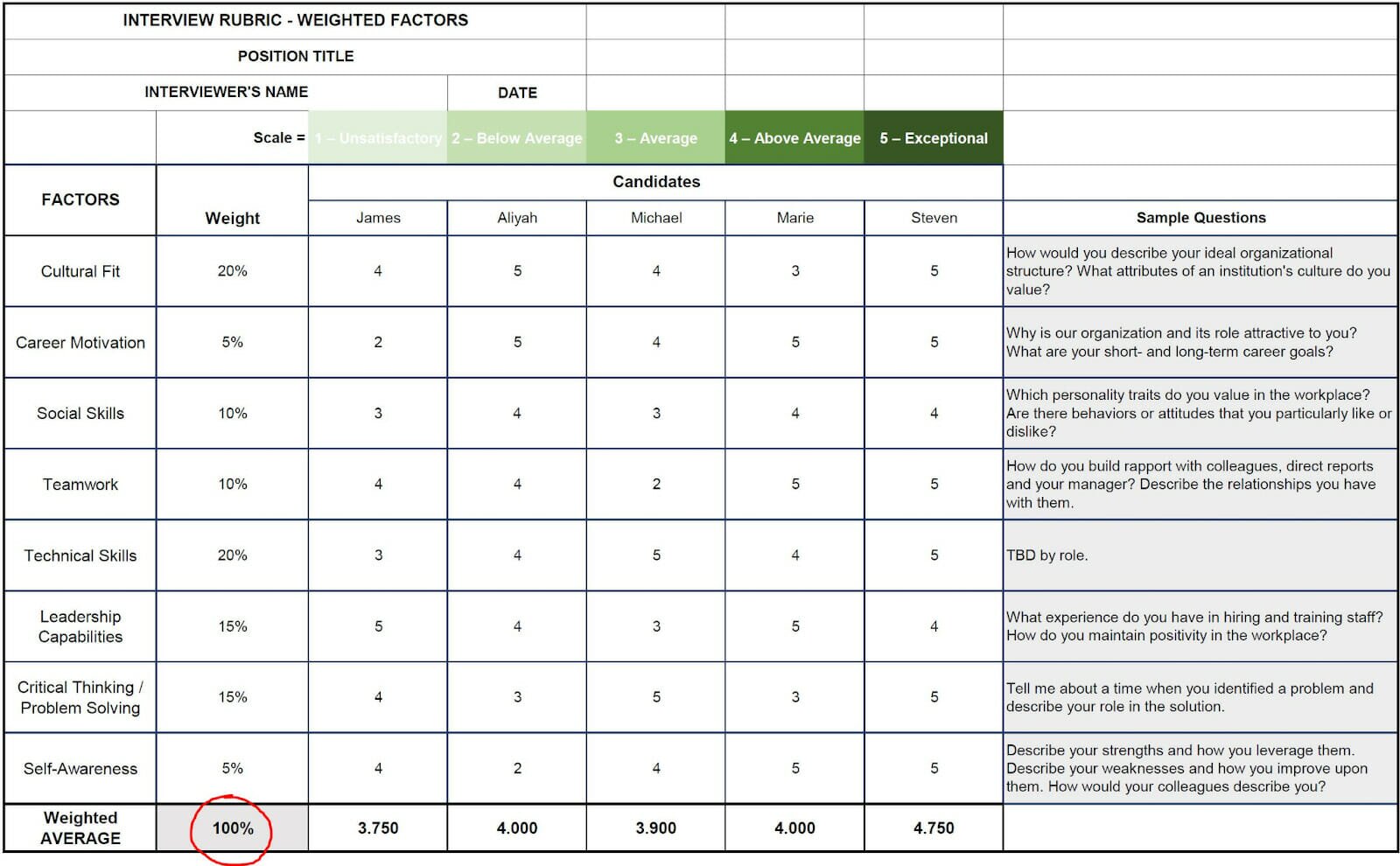
Congratulations!
Do you want to stay on top of your market? With this better understanding of how to define the prioritisation drivers that matter for your business, you are now equipped to evaluate and prioritise the topics for your products or services with more objectivity, and cherry on top, with more impact.
In the next article, we’ll talk about how to link those prioritisation drivers to product strategy with the help of the Objectives and Key Results (OKR) framework.


